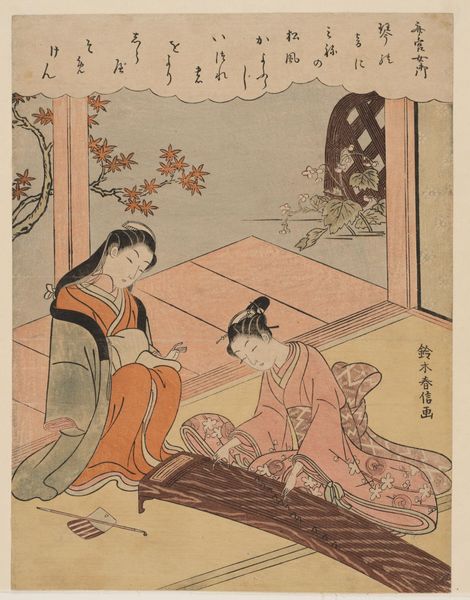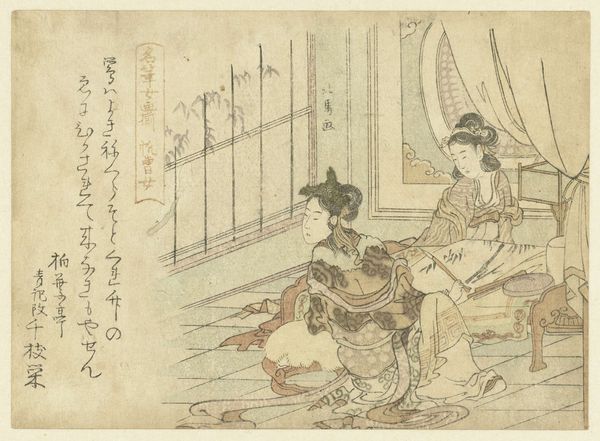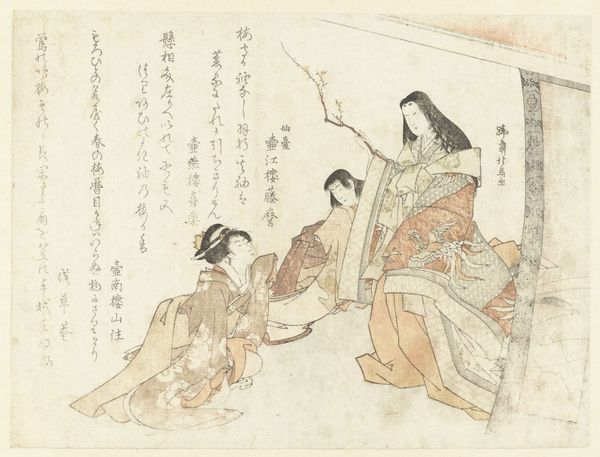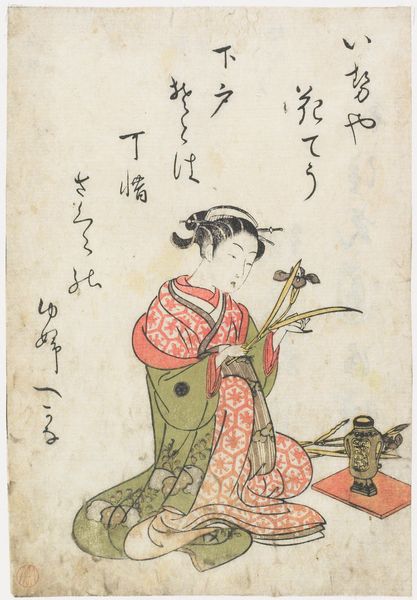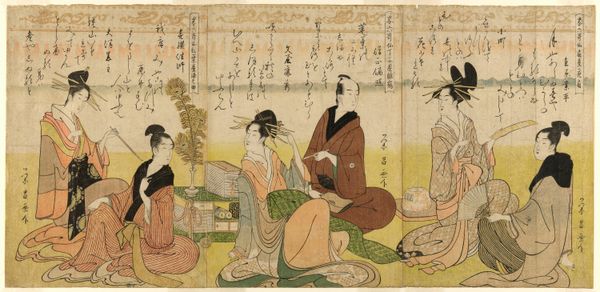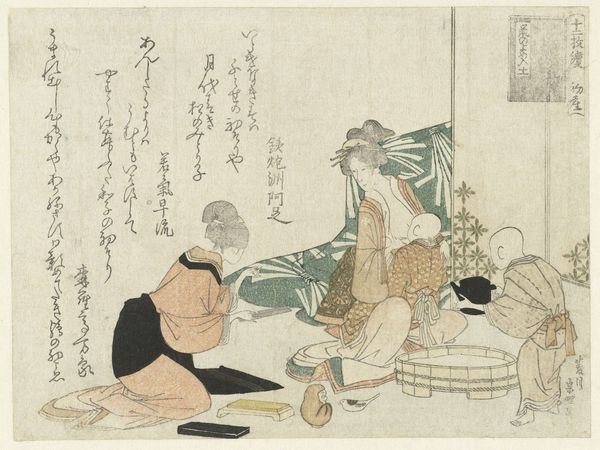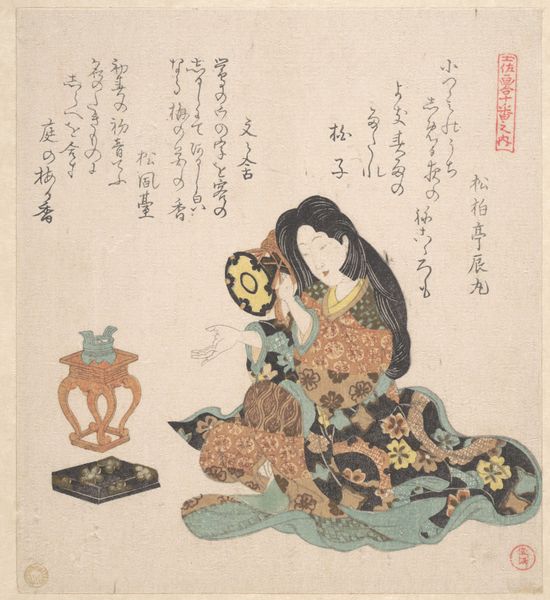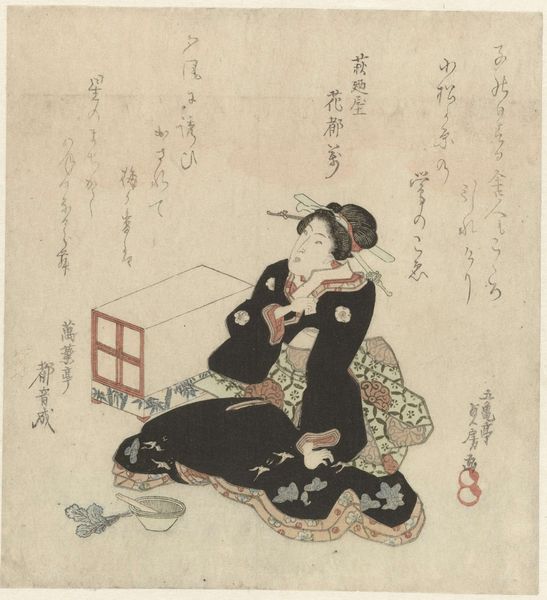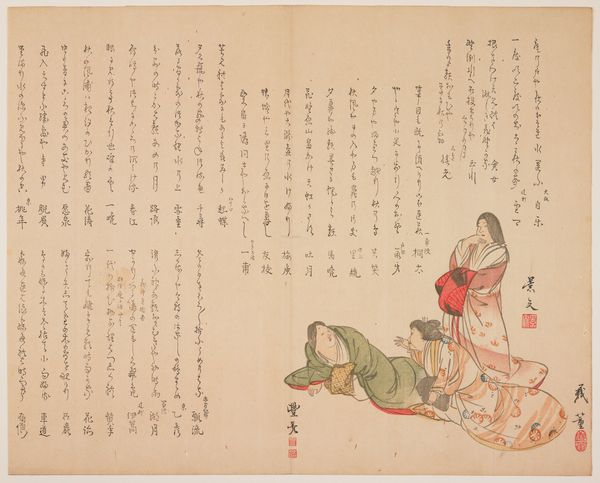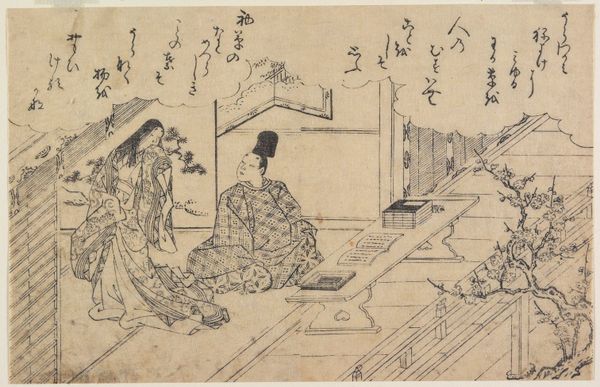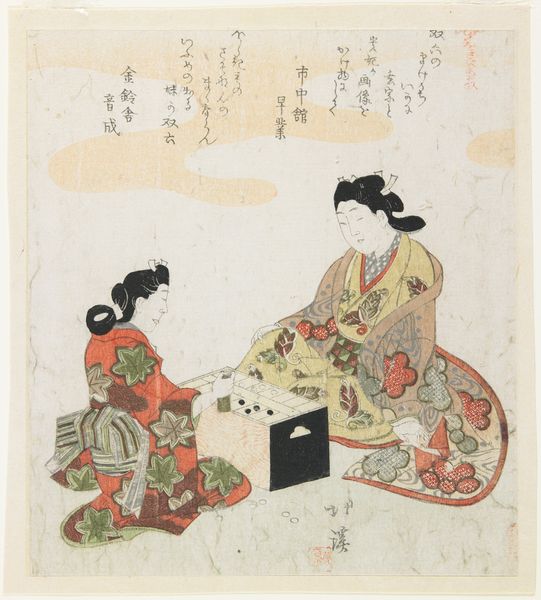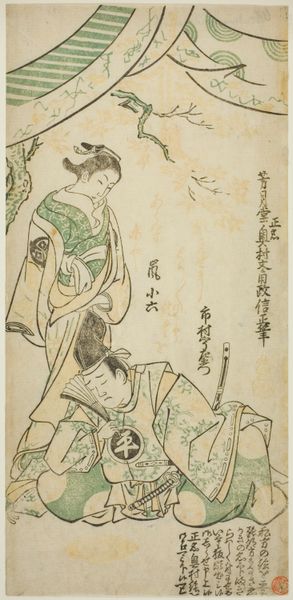
drawing, paper, ink
#
drawing
#
asian-art
#
ukiyo-e
#
paper
#
ink
#
genre-painting
Dimensions: height 133 mm, width 181 mm
Copyright: Rijks Museum: Open Domain
Curator: Allow me to introduce "Court Ladies Viewing a Painting," a piece attributed to Teisai Hokuba, dating from around 1800 to 1805. It's executed in ink and color on paper, very much in the ukiyo-e tradition. Editor: My first impression is quiet contemplation. The figures seem absorbed, the colors muted but elegant, and the whole scene has a sense of carefully constructed intimacy. Curator: The work speaks to the social role of women in Edo period Japan, their cultivation and participation in artistic practices like painting and appreciating art. The act of viewing itself becomes a social performance. What does it reveal about the economy surrounding the consumption of art? Editor: Absolutely. Hokuba’s work implicates class—paper was clearly a resource, as was ink. Ukiyo-e prints circulated within specific networks, and this image prompts us to consider the patronage structures supporting artists like Hokuba and their relationship with craftspeople involved in papermaking, inkmaking, and printing processes. Curator: Indeed, we also see how it reifies painting as a central facet of a woman's life. Look at the labor and materials involved; from the production of pigments, brushes, and supports, this work reflects that visual art plays a role in cementing gender identity and status in early 19th-century Japan. The fan that is shown in the hand of the women adds the layer of social importance, perhaps indicating access to culture. Editor: It is important to examine who produced these artworks. How their identity and positioning in these cultural scenes were significant to them? Curator: Exactly. Thinking about how images like this one were consumed, collected, and displayed also provides insight to the power dynamics structuring the art world, and how institutions affect the lives of makers and viewers, even now. Editor: Looking at Hokuba’s print today allows us to engage in the dialogue around access to art. Hopefully by engaging with a collection such as this one, museums can take actions towards shaping a more diverse history. Curator: I think considering it in the present and reflecting how its physical construction reflects a deeper system allows us a broader understanding. Editor: A perfect harmony of intention.
Comments
No comments
Be the first to comment and join the conversation on the ultimate creative platform.
